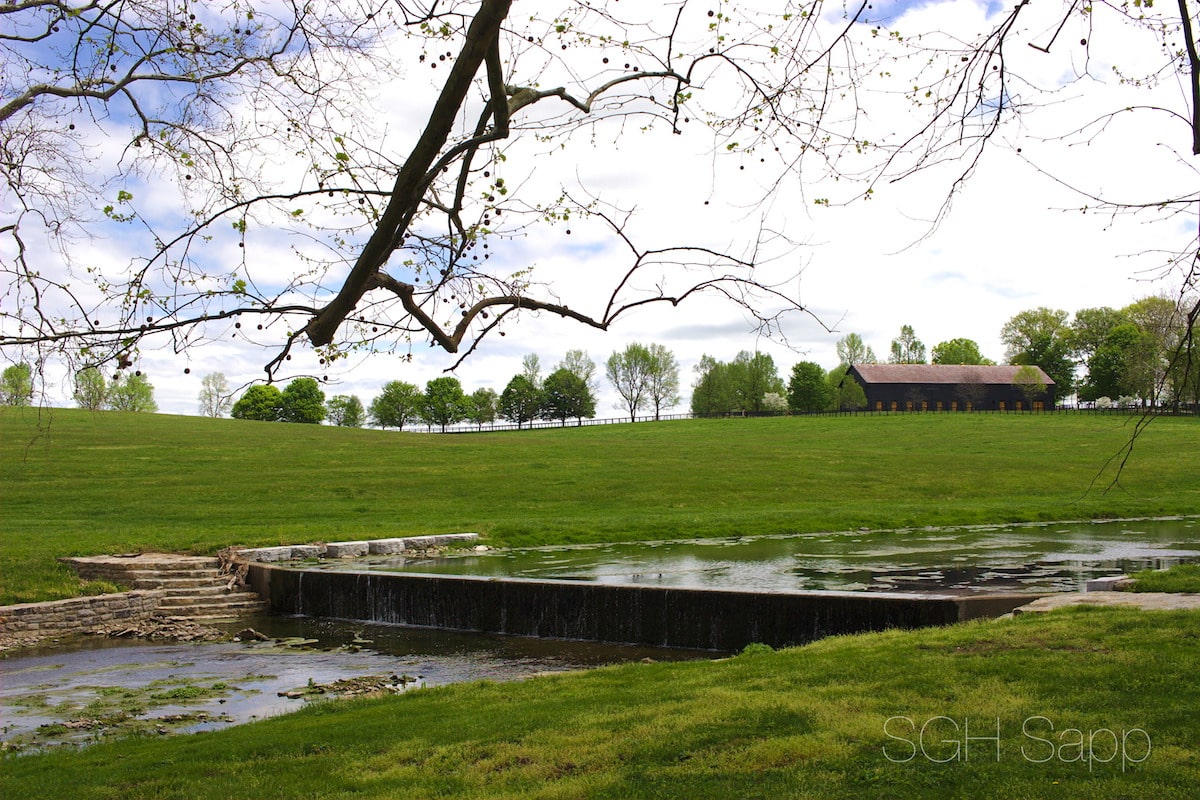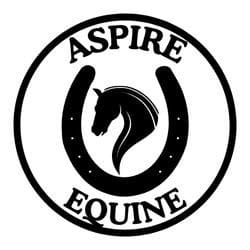Why Central Kentucky is a prime breeding ground for Thoroughbred racehorses

Farms like Claiborne have the right ingredients to grow racehorses: fertile topsoil, natural water sources, nutrient-rich limestone, lush pastures and gently rolling hills. Flicker Creative Commons/Sarah Sapp
The Hancock family has been breeding and raising Thoroughbreds since the 1800s and knows a thing or two about producing quality racehorses. In 1910 they launched a Kentucky offshoot of their Ellerslie Stud in Virginia and called it Claiborne. Within a decade Claiborne had eclipsed Ellerslie in fertility and production, so the Hancocks moved their family and operation to Lexington permanently. Over the past century they’ve stood the likes of Mr. Prospector, Secretariat and Unbridled and raised dozens of superstars, including Blame, Go For Wand, Orb, Personal Ensign and Ruffian.
The Hancocks aren’t the only breeders to recognize the horse-raising potential in Kentucky’s Inner Bluegrass region. Today, about 40% of the annual North American foal crop are born in the state each year. Most of the country’s leading stallions stand at Central Kentucky’s famed farms.
Bradley Purcell, second-generation Kentucky horseman and Claiborne farm manager, says the topography, climate, grass and soil combine to make the region prime real estate for breeding Thoroughbreds.
“I think it’s got a lot to do with our gently rolling fields where a horse can get turned out hopefully for 15 to 20 hours a day in these 30- to 40-acre fields,” he says. “The young horses learn how to compete and play with others, and running up and down these hills they tend to get a get a nice build to their body.”
The region’s rolling topography also encourages good drainage, which is key to healthy pastures and good forage growth.
While rolling hills aren’t unique to the Bluegrass, the commonwealth’s vast amount of undeveloped land means farmers and breeders have better access to it than most. Kentucky has a robust agricultural conservation easement program, whereby the local government can buy property owners’ rights to develop their land commercially, preserving it as farmland indefinitely. It currently protects 281 farms of all kinds on more than 30,500 acres.
The Ground They Gallop On
Krista Lea, MS, coordinator of the University of Kentucky’s Horse Pasture Evaluation Program, in Lexington, believes the most unique aspect of the land in the Bluegrass is the productive capacity of its soil.
“If we look at the soil types across the United States, we find some of the most fertile soils in the country in this area,” she says.
All soils are composed of some ratio of sand, silt and clay. The Inner Bluegrass boasts an even mixture of the three called loam. Lea says it’s the best of all worlds, benefiting from each particle type’s strengths: Sand is easy for roots to penetrate, clay holds moisture well and silt helps prevent compaction. The result? Ideal growing conditions for one of the region’s other assets — good grass.
“Kentucky bluegrass, what the state is really named for, is an excellent grass for horses,” she explains. “Nutritionally, it’s good for them, but the main difference (between bluegrass and other grasses) is that it thrives under grazing pressure. Horses graze really close to the ground, and most grasses aren’t able to tolerate that. But bluegrass can, and that’s probably one of the biggest reasons we prefer it for horse pastures. It also forms that really tight sod, so it’s going to provide a smoother or more level surface for horses compared to something that’s clumpy, like fescue or orchardgrass.”
Many other desirable grass species — like Bermuda grass, orchardgrass and, yes, crabgrass — populate the region’s pastures, as well. Lea attributes the rich diversity in grasses to Kentucky’s ideal climate.
“We have two distinct growing seasons,” she says. “Kentucky is right in the middle of that transition zone where we can grow both warm- and cool-season grasses. We have such a long growing season that we end up with so much available forage throughout the year.”
Purcell says the fields at Claiborne are covered in lush green grass for at least eight months of the year. His team keeps stocking densities low to ensure horses don’t overgraze those verdant pastures.
The sheer amount of protected acreage many Kentucky Thoroughbred farms own (Claiborne, for instance, covers approximately 3,000 acres) allows them to use their land wisely.
“We’ll have about 10 to 12 foals, yearlings, weanlings or pregnant mares on a 30- to 40-acre field,” says Purcell.
This ratio protects the land and ensures horses can consume as much nutrient-rich grass as they want. And, as he mentioned, the space gives young, growing horses room to stretch their legs and strengthen their bodies.
“Horses can get out and naturally build their muscle tone, build their bodies,” he says. “The light concussion of playing with each other out in these fields helps build that nice strong bone.”
The Calcium-to-Phosphorus Conundrum
Another factor many say builds good bone is the region’s limestone base. Purcell believes the streams winding through Claiborne’s fields give horses access to a nutrient-rich, limestone-filtered water source. The limestone also gives Central Kentucky’s grasses and soil high calcium-to-phosphorus (important components of equine diets) ratios. How this benefits horses is part science and part legend.
It’s true that the Inner Bluegrass’ deep, rich soils originate from a layer of phosphatic limestone beneath the ground. The University of Kentucky Soil Testing Lab has analyzed these soils and confirmed they have high calcium and phosphorus levels. Lea’s colleague Joshua McGrath, PhD, however, believes the Horse Capital of the World landed in Lexington not because Thoroughbreds raised on the calcium-rich land grow stronger bones than any other horse, but because settlers migrating west in the late 18th and early 19th centuries passed directly through the Bluegrass region. These farmers recognized the land’s exceptional forage yields during a period when demand for horsepower and production was high.
“You hear lots of people talking about that calcium-to-phosphorus ratio and the limestone base and how it grows good strong bones,” says Lea. “But there’s a good chance part of the reason Lexington is known for horses is just by happenstance. When we were switching over from horsepower to industrial power, this is kind of the edge of where things were at the time.”
Simply put, the land in the Inner Bluegrass is naturally set up for agriculture and grazing livestock. “The truth is we have the technology to raise a Keeneland sales topper in Antarctica if we really wanted to,” says Lea, “but it’s just easier here.”
Where Racehorses Grow Well
There’s a good chance your OTTB or his ancestors were bred, born and raised in the Bluegrass. Farmers and horsepeople recognized early on that this region was ideal for breeding horses, thanks to its soil, grass, climate and lack of development. It continues to be the epicenter of the Thoroughbred industry.
“I’d love to say that the land and the climate are the only reasons we’re here,” says Lea, “but I really think that the industry and the community really value this area and want to protect it and keep it what it is.”
Purcell sums up that land worth protecting: “We’ve got nice topsoil here, natural water sources, a lot of limestone in the area, pastures that stay pretty lush for most of the year and gently rolling hills” — a perfectly concocted recipe for raising racehorses.
This article was originally published in the Winter 2022 issue of Off-Track Thoroughbred Magazine, the only publication dedicated to the Thoroughbred ex-racehorse in second careers. Want four information-packed issues a year delivered to your door or your favorite digital device? Subscribe now!

